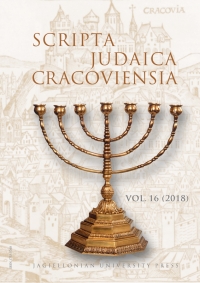Nusekh Poyln and the ‘New Jewish Man’. The Image of the Jewish Communist in Yiddish Literature of Post-War Poland
Nusekh Poyln and the ‘New Jewish Man’. The Image of the Jewish Communist in Yiddish Literature of Post-War Poland
Author(s): Magdalena RutaSubject(s): Jewish studies, Studies of Literature, Polish Literature, WW II and following years (1940 - 1949), History of Communism, History of the Holocaust
Published by: Wydawnictwo Uniwersytetu Jagiellońskiego
Keywords: Yiddish literature; Communism; postwar Poland; the Holocaust; ‘new Jewish man’; Socialist Realism;
Summary/Abstract: After World War II, the Communist regime took over power directly after the liberation of Poland in 1945. Jewish survivors, having stayed in the country for a certain period of time, tried to revive their multilingual cultural life. Literary works of writers in that community are a fascinating testimony of their struggles: how to be loyal to the Socialist state (condition sine qua non to take part in the official cultural life) on the one hand, and on the other how to express their feelings, thoughts and convictions which they could not and did not want to ignore. Their struggles can be observed on the sample of the three most important motifs of postwar Polish-Yiddish literature: the Holocaust, Communism itself, and Polish-Jewish relations. The article discusses selected literary works of the most prominent Polish-Yiddish writers, whose main character or lyric subject is the ‘new Jewish man’ shaped according to the Communist principles. The author attempts to answer the question of what the most important features of a personality formed by Communist doctrine are, and also to learn about the circumstances of the communist world in which that literary hero lives. Close reading of the programmatic literary pieces of some Communist writers also enables observing whether and how Polish Jewish Communists managed to find a compromise between the mutually exclusive Communist internationalism and their attachment to Yiddish-language culture, and how they reacted when information of Stalinist crimes came to light and their party comrades turned the blade of antisemitism against them. The ambitious project to build a new model of secular progressive Yiddish culture (the so-called ‘nusekh Poyln’), failed to bring the expected results. In spite of concerted attempts to meet the unrealistic demands of Socialist Realism, it soon transpired that Polish-Yiddish literature under Communism was unable to deal with the lack of space afforded by Communist ideology for mourning its murdered nation or with the spasms of unease that were the reaction to the periodic antisemitism in the non-Jewish environment.
Journal: Scripta Judaica Cracoviensia
- Issue Year: 2018
- Issue No: 16
- Page Range: 133-142
- Page Count: 10
- Language: English

